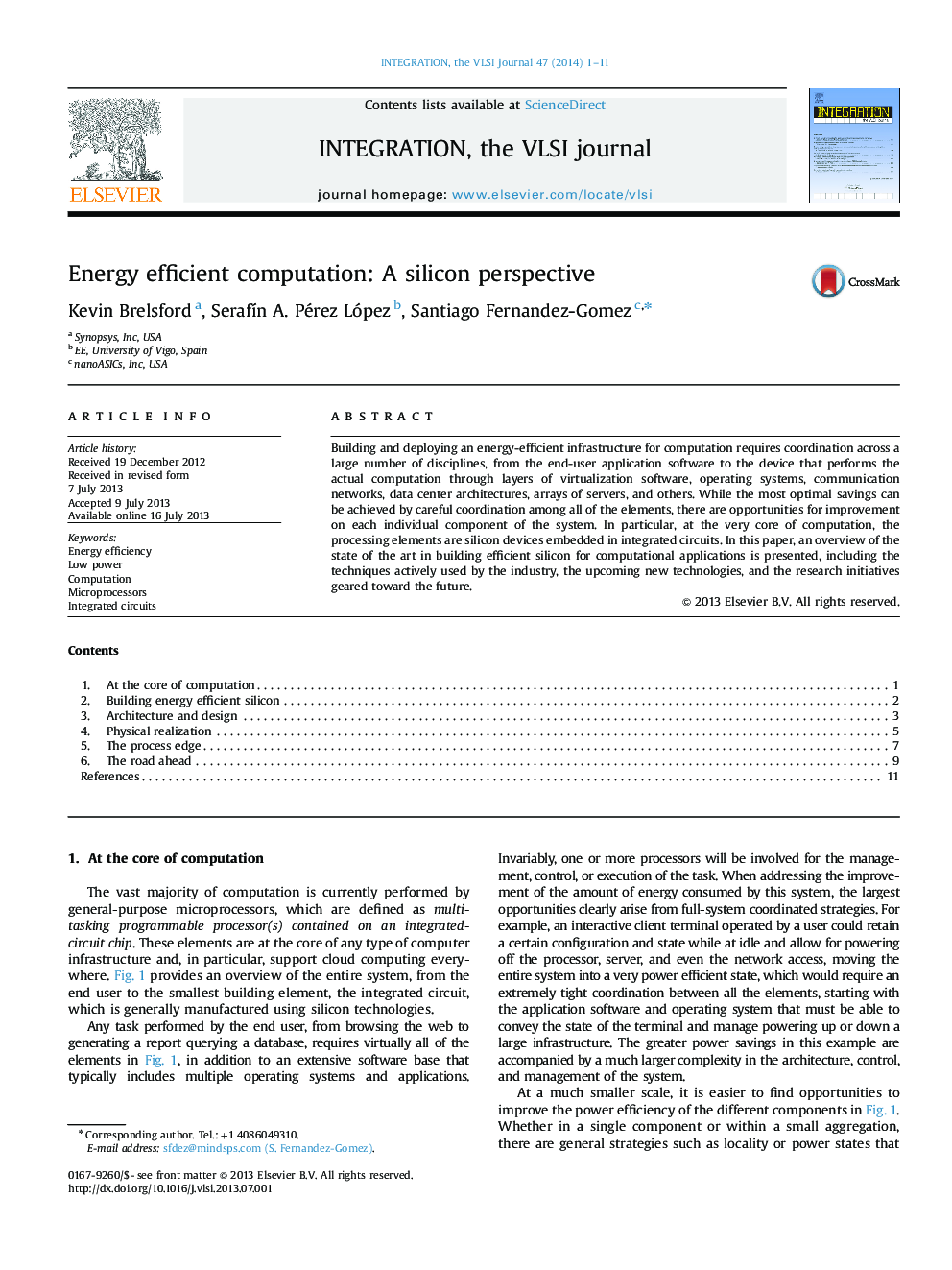| Article ID | Journal | Published Year | Pages | File Type |
|---|---|---|---|---|
| 539685 | Integration, the VLSI Journal | 2014 | 11 Pages |
•Energy efficient computation benefits from coordination among software, systems, and components•Numerous opportunities exist for improving the power efficiency of silicon-based integrated circuits•An overview of the state of the art and future trends on silicon power efficiency is presented
Building and deploying an energy-efficient infrastructure for computation requires coordination across a large number of disciplines, from the end-user application software to the device that performs the actual computation through layers of virtualization software, operating systems, communication networks, data center architectures, arrays of servers, and others. While the most optimal savings can be achieved by careful coordination among all of the elements, there are opportunities for improvement on each individual component of the system. In particular, at the very core of computation, the processing elements are silicon devices embedded in integrated circuits. In this paper, an overview of the state of the art in building efficient silicon for computational applications is presented, including the techniques actively used by the industry, the upcoming new technologies, and the research initiatives geared toward the future.
